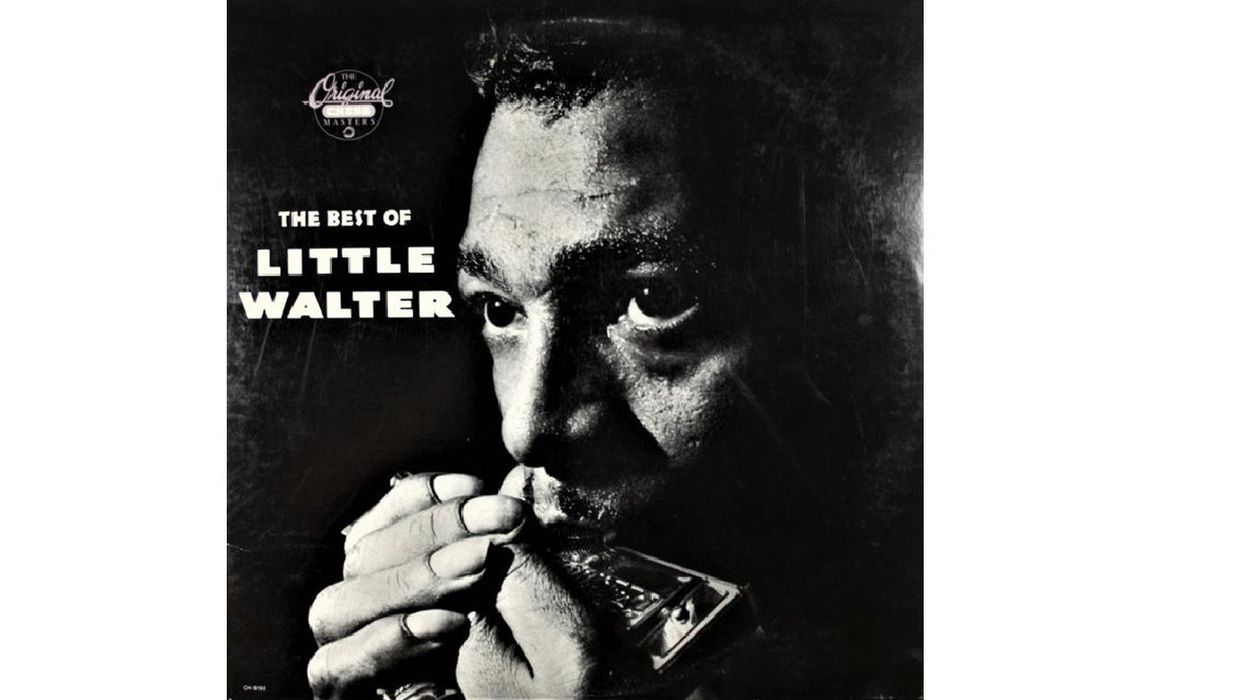Conversely, good things can happen when a skilled musician joins a jam playing something as silly as an egg shaker or a kazoo. In fact, one could argue that when it comes to jamming with a stage crowded with guitarists, you're far more likely to make a substantial contribution if you're playing anything but guitar. Ever watched the all-star finale on Eric Clapton's Crossroads Guitar Festival? There are perhaps 15 famous guitar players lined up across the stage, and each sequentially solos for 12 excruciating bars. It feels like this goes on for weeks. The playing may be brilliant, but in that context, each solo becomes white noise—indistinguishable from the one before or after it. It's just too damn much guitar.
And that's why each of you, my 6-string friends, should start playing another instrument. Guitarists are competitive by nature, but instead of trying to outplay one another, try covering a different sonic space. Don't be another wanker beating the pentatonic box to death as three other guitarists impatiently wait their turn. A few well-placed notes on a harmonica will make more of an impression than yet another blistering guitar solo sandwiched in among the others.
For a minimal investment of roughly one Ben Franklin, you can buy three good harps and get started on the path of becoming a multi-instrumentalist. Being a harmonica master like Stevie Wonder, Charlie McCoy, or Toots Thielemans takes a lifetime of dedication and massive talent, but we're not aiming for that. We just want to be able to fake our way through a blues jam, and that's relatively easy with harp. The audience is on your side when you blow harp. Step up to a live mic and play one cool riff on a harmonica, and somebody in the crowd will begin cheering.
The secret to playing blues on a harmonica? It's called cross harp, a technique that gives you those cool bends and freight train whistles. Think Little Walter, Junior Wells, James Cotton, and Charlie Musselwhite, rather than the Bob Dylan approach that sounds like someone randomly sticking a harmonica out the window of a moving car. Because you bend notes with cross harp, you're able to get those emotionally tinged lowered 3s and 7s that make people listen. It's the sound of heartache, sex, salvation, etc.
To play cross harp, start with a diatonic harmonica—the basic 10-hole model that any decent music store will carry. There are a handful of manufacturers, but the only ones I've had good luck with are several models—the Marine Band, Blues Harp, and Special 20—or my personal favorite, the Lee Oskar Major Diatonic. Any of these harps will allow you to bend notes like Howlin' Wolf.
Through bending, a good player can find 12 extra notes on a 10-hole major diatonic harmonica that's designed to play 20 notes. (These are all down bends, though some great harp players can bend up. I cannot.) It's hard to describe how to bend notes on a harp because the action isn't really visible and you're using your mouth, rather than hands on strings. But here goes: Start on the fourth reed of your harp, and suck in. Then slowly tilt the harp down toward your chin, hold it there for a bar, and then bring it back up. You'll probably hear the pitch dip down during this exercise. I find it helps to think of the note you want to hit.
Then suck in on the fourth reed while you drop your jaw. Next try doing it while you purse your lips like a drag queen blowing a kiss across a stage. Now try jutting out your chin like Popeye. Try holding your mouth like you're making different vowel sounds—go weeee, eeee, aaaa, woo, ooo, youuuuuu. All of these embarrassing movements will change the shape of your mouth and that will affect the note.
Once you nail some good bends at the fourth reed, do the same thing on the seventh reed. After you've dialed in that sweet spot, work each part of the harp from low to high and find five juicy notes. They'll become the foundation of your blues vocabulary.
The trick to playing cross harp is fitting the harp to the key, which is not as obvious as it seems because with this technique, the harmonica's tonic will be the IV of your progression. For example, take a standard I–IV–V blues progression in the key of E (that's E, A, and B, respectively.) To play cross harp, match the key printed on the harmonica to the IV chord. So, to play cross harp in the key of E, you'll want an A diatonic harmonica. In the key of G, use a C diatonic harmonica. To play in the key of A, grab a D harp.
Here's the recipe for following the I–IV–V changes: Suck in on the I, blow out on the IV, and suck in on the V. It's that simple. Put on your favorite E blues track and play along until you find the notes that work. If you can't find an E blues track, fire up this YouTube video and drive everybody in your house crazy for the next two hours.
Once you've got these basics down, you'll find a ton of great information online (such as the Lee Oskar Quick Guide) that can take you to the next level. You never know, that innate curiosity that led you to guitar in the first place may drive you to be the next Dan Aykroyd or John Popper from Blues Traveler.




















